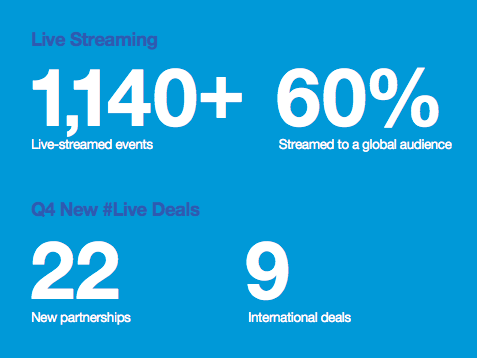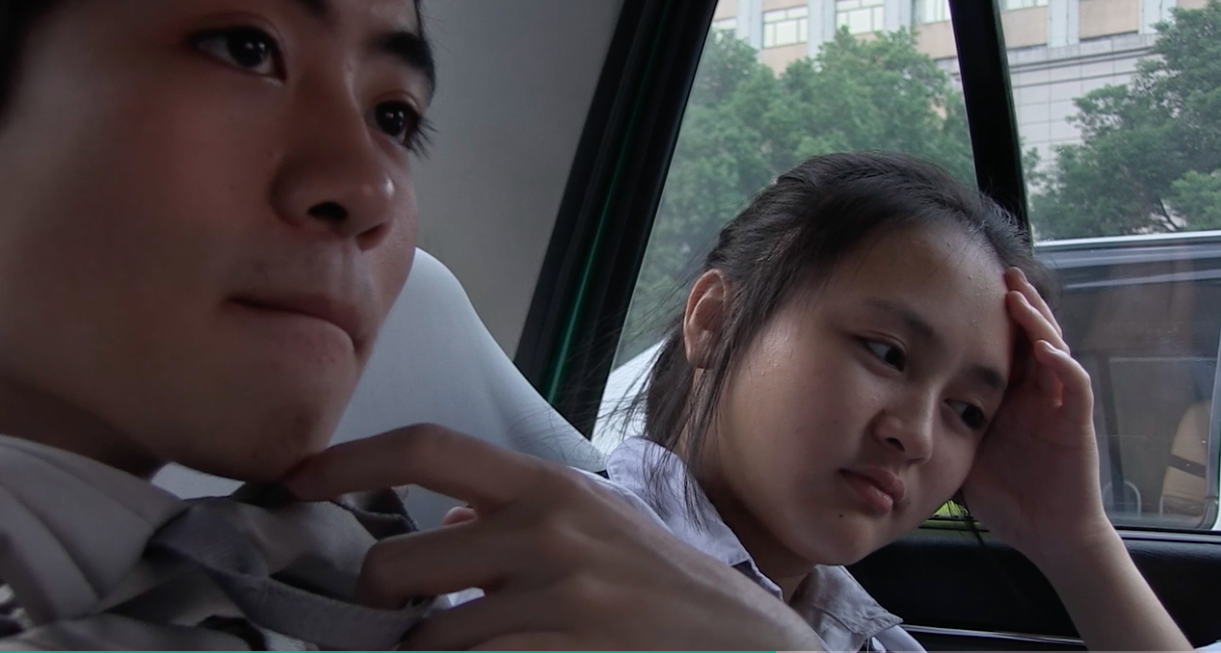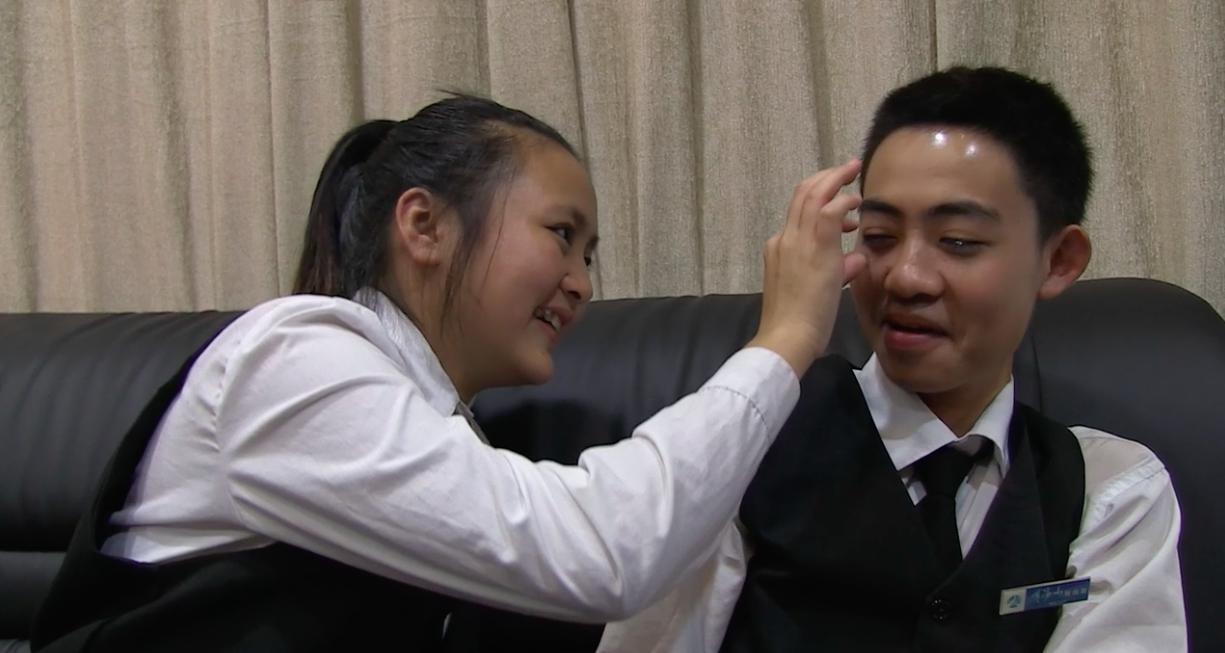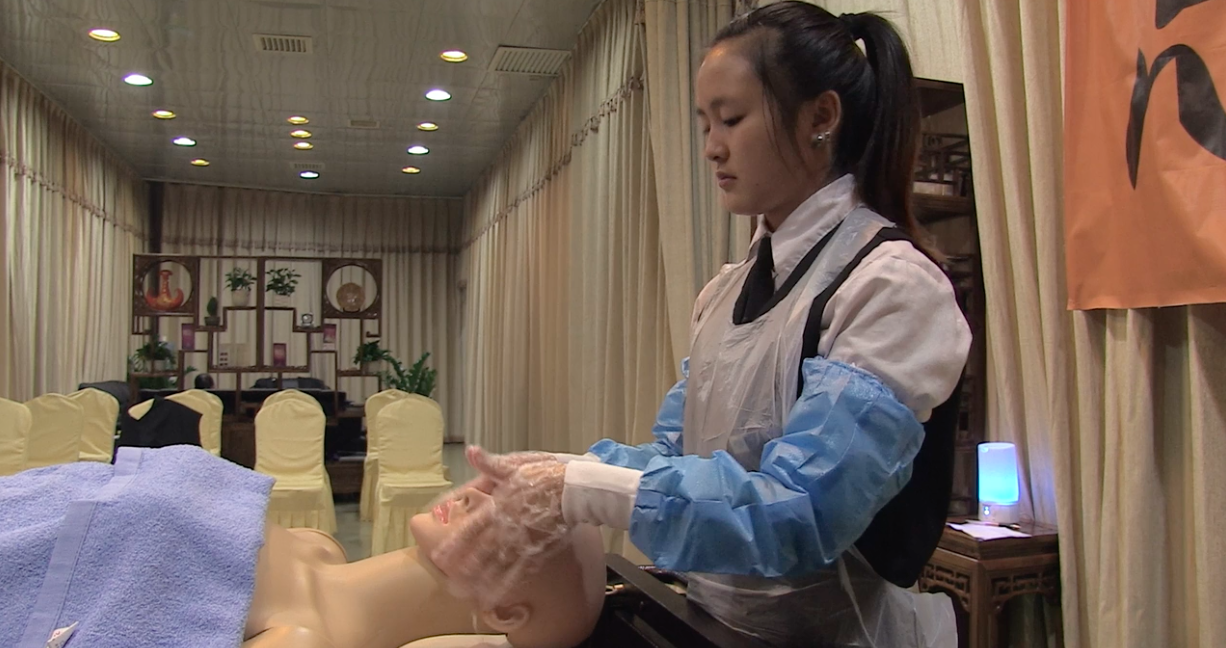Last week I was researching the charity sector for a potential copywriting project. It has become a very congested space, with at least 168,000 companies of all shapes and sizes operating in the UK. Good news, right? That’s more people trying to make society a better place. But if you are a charity, it also means more competition for someone’s money, goodwill and attention.
Read MoreFive fabulous charities that do marketing differently
How do you #GoLive?
What's the difference between Twitter Live and Periscope? I see the camera button beneath the cursor when I open a window to tweet. And the latter, which Twitter acquired in 2015, is installed on my iPhone – still waiting to be loved. But shouldn't they be doing the same job, allowing smartphone owners to live stream any time anywhere and get instant feedback?
I have another important question. Is anyone regularly using these tools beyond early adopter types, X Factor hopefuls and wannabe celebrities? Who are the must-follow live streamers? How is the company working to nurture its broadcaster community, one that has been largely underserved as this Mashable article explains? And what about Facebook Live, Instagram Live and YouTube Live? Everyone is going live. Where does Twitter fit in?
Only one place to go for answers and that’s London HQ, of course. There, among a small industry crowd, I was given a short presentation about the different ways that people are harnessing the service, from popular individuals like Emmy Award-winning storm chaser Jeff Piotrowski to power publishers like Buzzfeed.
Our host also gave us a glimpse into the future. One key update was that Twitter plans to combine Twitter Live and Periscope to create the go-to live broadcast platform, one that can be accessed and navigated in as fewer clicks as possible like Snapchat. A sensible move for a company that wants to be what’s ‘now’ (or rather “what’s happening in the world and what people are talking about right now”).
Although it’s important to appeal to the general public, both in terms of deepening the pool of available streams and clocking up viewers to woo advertisers, it is clear that brands are also key targets for Twitter. This is a business, after all. Hence the recent launch of Twitter Studio for publishers. Jo Kelly, Twitter’s Head of News EMEA, said that, “The priority is working with news organisations to monetise their content, taking clips from their live streams to market.” This could be in the form of breaking news (Bloomberg is a partner), pre-planned events ( eg Live Nation concerts and Wimbledon) or special programming (Gatorade's #TheBuzz and PopBuzz).
According to their Q4 2017 shareholder letter, Twitter live-streamed more than 1,140 events (up from 830 in Q3) and made 22 new partnerships (nine of which were international). It will be interesting to see how the interests of consumers and brands each impact product development.
Part two of the evening was a panel discussion featuring Evan Hansen (Editor-in-chief of @periscopetv and ex-Wired), John McHugh (Co-founder of news agency @verifeyemedia) and Ryan Broderick (Deputy Global News Director at Buzzfeed). Some good points came out of that conversation. Hansen was predictably buoyant about the service, saying that, “So much of broadcasting has been the fourth wall and distancing yourself from the story. This is more engaging and allows the person streaming to really use the camera to help inform.”
And referring to the more news-driven political reports, he pointed out that, “The arc of these stories is often a lot longer than the initial broadcasts. It’s not just a one-off. There is a whole ripple effect, galvanising people around an issue.”
McHugh is a veteran of mobile journalism. He noted that live broadcasting has been around for a long time. In fact, I have covered pioneers such as Tim Pool and the rise of smartphone-wielding citizen journalists on this site. But the ability to upload content on site, in the midst of a story, is now greater than ever, especially for those working on investigations. One caveat though: he was quick to emphasis the value of personality and insight when live-streaming, particularly if you hope to make money from it.
Otherwise you risk undermining your brand. “When you watch live, the picture can be shaky, noisy but people want to stay with it to see what happens. But if you are live you need to keep it engaging, explain what’s happening…” And your audience can help you do that by asking things you haven’t even thought of. It's not all about flying hearts.
Broderick is an engaging presenter/commentator. He has live-streamed reports everywhere from pro-union protests in Barcelona to North Korea demonstrations at the Winter Olympics. For him, Periscope is “an incredible opportunity to get right in there.” But it goes beyond that. Buzzfeed is still fighting for credibility in the media industry. “We really want to showcase that we have reporters and they know things,” he said. However, he was concerned about the issue of consent as you are putting people live on camera like never before.
Overall I did come away with more questions than answers, many of which Hansen echoed. For instance, how is Twitter going to verify and manage all this user-generated content? Streams could easily be misleading – “context isn’t always there with live,” as he put it. One solution could be to aggregate several feeds/cameras from one event or scene. Safeguarding is also important. Remember last year’s stories about viewers grooming children on the platform?
But let’s finish on a more optimistic note. Well, two actually. Personalisation is always a big carrot for users. So imagine if Twitter could recommend the best content for you using machine learning. That would be invaluable. Secondly, Hansen anticipates a new realm streaming-inspired documentary. “Where could live video go next?” he asks. “What can that bring us in terms of understanding what’s going on in the world and our enhancing our empathy?
Let's get out there and find out.
How to make hits and be popular
Relax, this isn’t a Dale Carnegie-inspired manual for the socially inept. And I can't promise pop stardom either. But if you've ever wondered how ideas catch on, then read on. This is about how to find your audience and get noticed … for the right reasons.
As a copywriter, an editor and the producer at a polymath arts group, my enduring goal is to win people’s attention. From trying to write irresistible headlines to predicting the zeitgeist technologies of the future and agonising over the best way to package an unconventional project.
In the algorithm age, this should be easier to achieve. Data is abundant and real-time, which gives us clues as to where, why and how things happen. Want to know who is checking you out online and what they are most interested in? Then Google Analytics is still your best friend. By identifying popular searches and talking points, you could identify a hit before it happens. It could be your hit.
Netflix has famously used the viewing histories of customers to programme original content such as House of Cards, while Spotify is confident it already knows what we’ll be singing along to in six months’ time. (Leveraging this data as a record label could even be its path to profitability.) Even legacy companies such as Warner and CBS have been using "insight automation platform" SoundOut as their crystal ball for several years.
With so many clues flying about as data across industries and channels, there must be a formula for this kind of thing, right? If anyone knows, it is Derek Thompson, senior editor of The Atlantic. Last year he wrote a book called Hit Makers: How Things Become Popular.
It is a fascinating trawl through almost 200 years of media, technology and popular culture – told with acuity and good humour. We hear insightful stories about everything from Brahms, Bill Haley and Hero’s Journey mythologist Joseph Campbell, to Star Wars, Fifty Shades of Grey and the birth of brand Disney.
Thompson’s core thesis is that “familiarity beats novelty and distribution beats content.” In other words, the majority of us prefer familiar surprises because that inkling of recognition gives us a jolt of meaning. That’s point one. A good example is how writers try to catch the attention of film producers with high-concept pitches that have a certain level of “optimal newness”, as Thompson puts it. So Aliens is “Jaws in space” and Titanic is “Romeo & Juliet on a sinking ship”. This approach also applies to other industries. Think of Uber as “Airbnb for cars”. The "Uber for…" becomes the shorthand, and so on.
The chapter on repetition in the context of songwriting and speechwriting is very interesting, particularly for all you language students out there. Using famous examples of rhetorical devices such as epistrophe (repeating words at the end of a sentence as in Obama’s “Yes, we can”) and antimetabole (an inversion such as JFK’s “Ask not who your country can do for you; ask what you can do for your country”) he demonstrates how hooks hold power over us.
“There is good and bad in this,” Thompson cautions. “By turning arguments into spoken music – and making poetry out of policy – antimetabole and its cousins can make important and complicated ideas go down easily. But they can also wave a magic wand over frivolous and dubious ideas, turning something questionable into something catchy.”
Raymond Loewy is an important figure in the book. Thompson considers him to be perhaps the most significant commercial artist of the 20th Century, the man behind the Exxon logo, Lucky Strike pack, Greyhound bus, modern tractor, vacuum cleaner refrigerator… Loewy had a theory called MAYA (Most Advanced Yet Acceptable), which again highlights that tension between the new and the familiar, or neophobia and neophilia in Loewy’s words.
Thompson’s second key point burns the illusion of "going viral". Word of mouth is still a highly influential factor in determining what becomes popular. Those one-to-one moments. But, using Fifty Shades of Grey as his example (a book that first made its mark on mini-network fanfiction.net), the real amplification effect kicks in when traditional media outlets such as the New York Times and NBC’s Today Show broadcast to tens of millions of people. “A real virus spreads only between people,” explains Thompson. “But a ‘viral’ idea can spread between broadcasts.”
For all his promising analysis, Thompson does cop out a bit. There is no magic formula, just a brutal truth – “culture is chaos”. Hit making is often about timing and luck. Take Haley’s ‘Rock Around the Clock’, for example. “Sometimes a rock song comes out on the radio in 1954, and tens of thousands of Americans hear it and don’t buy the record,” he writes. “Then in 1955 the song comes out again, for a slightly different audience in a new medium. The context shifts, a chain reaction of improbable events occurs, and [it] becomes the national anthem of rock and roll.”
Nonetheless, credit to the author for joining the dots with such authority and prime-time gusto. Thompson will have you jumping on to YouTube in seconds, unleashing a flood of ideas. One of them might just catch on.
From the vaults – Stranger in a strange land
Fiction isn't really my forte but after mentoring at the Ministry of Stories, working on more scripts for clients and discovering genre-bending series such as Wormwood, I have begun to question my own limitations. And what a feeling. It's healthy to embrace whatever you think you are least capable of.
A while back, I went on a two-day Master Class presented by The Game Changer. The aim was to develop a new wave of original filmmakers, producers and writers from black and minority ethnic backgrounds. Over one intense weekend they held sessions on new perspectives in characterisation and unconscious bias, directing your vision, building emotional intelligence, presenting ideas and finding funding
The most inspiring part for me was the directing workshop run by the intense yet charismatic Burt Caesar. He took us through the principles of narrative and how to work with actors to convey a story on set. Then it was time to put theory into practice by writing a two-scene short in about 30 minutes. He gave us a choice of five prompts:
- Stranger in a strange land
- Be careful what you wish for
- Can you judge a book by its cover?
- What you reap is what you sow
- No good deed goes unpunished
I chose the first.
Unfortunately, only a few of us got to read out their scripts.
So in the spirit of growth, it's time to share.
SCENE I
The sun beats down on a lifeless body in the back yard of a Nebraska chop shop. Rodents, ants, spiders and other creepy crawlies scurry across the ground. It is a sweltering, unforgiving noon.
The body begins to move…
Drifter: "Ah … not again. My head."
Voiceover: Hey, you wanna hear a funny story. I have this problem.
I know what you're thinking. Guy gets loose, has a few drinks next thing you know … he's face down in the middle of nowhere.
But this is different. This happens to me EVERY night. I mean every goddamn night. And I always end up in some filthy ashtray of a town, trying to pick up the pieces.
Drifter looks in his pockets for clues about the night before. But all he finds are coins and sand.
Drifter: "Wait, why am I wearing overalls?"
He slowly gets to his feet, still groggy, tripping over random metal bars, tyres and a sodden bag.
Drifter: "I need to get outta here. Wait, where the hell am I? Vinny. Call Vinny. He always knows what to do. He'll straighten things out for me."
Drifter stumbles to the nearest doorway and begins to get his bearings. He feels quesy. After a few wrong turns he finds the toilet and throws up. Violently.
Camera cuts to Drifter's bloody hands as he splashes water on his face and looks up at the mirror. His eyes finally open. Confusion turns to panic.
Drifter: "No, no, no…"
SCENE II
We open on a phone booth as Drifter tries to call Vinny. He barely makes it past five fumbled digits before the line goes dead.
A little girl, young and brash, taps him on the shoulder.
Girl: "Don't waste your time, buster. That phone hasn't rung since the Fifties. It makes a good restroom, though. If you're desperate n'all. But I guess you know all about that.
Drifter: "Beat it, kid. This ain't the time. Wait … where the hell am I?"
Girl: "That's a good one, greaser. Heavy night, huh."
Drifter: "Look, this is stimulating but I need to call my friend asap. Get a ride to my kid's birthday in Salt Lake City."
Girl: "Buddy you are s$%^ outta luck. That's a way and there's a big storm coming. Hey, I thought your kid passed years ago."
Camera pans to Drifter. He's confused and distraught.
Suddenly, a creaking door swings open and a grizzly stranger appears. Shotgun raised.
Stranger: "You can't hide forever, boy"
CUT
Almost Heaven
Imagine being confronted by death on a daily basis when you have your whole life ahead of you? Meet Ying Ling, a 17 year old training to be a mortician at Ming Yang Mountain Funeral Home in Hunan and the star of Carol Slater’s touching documentary Almost Heaven.
She is one of many kids in China who travel far from home to find a job. On the surface, she is your typical person on the cusp of adulthood – naïve, fun-loving and trying to find their place in the world. But in this morbid environment, her gentle character reveals nuances that draw us deeper into the story. And that story prompts us to reflect on our own life and the passing of time.
We see her role-playing the “spa” ritual – learning how to cleanse a corpse, as if washing away the illness and pain of the deceased as they prepare to pass into the next life. Gentle piano plays in the background as employees trim hair, massage the deceased’s face and feet and gently pass a shower head from side to side in a delicate motion.
A supervisor encourages the young trainee to show more emotion. “Feel inside your heart,” she appeals. “The love in you will show.” But Ying Ling doesn't think she can sacrifice herself to this job. She must retain that part of herself.
Her one respite is a cheeky young co-worker, whose long lashes she can't help but pull. He’s a few years older but shares Ying Ling’s playful nature. They hang out, play shoot’em up games and share their hopes for the future. Both are extremely likeable and their flirty scenes together help to lighten the mood. A nice counterpoint.
But then “Lashes” returns home at the behest his family. He also wants to spend more time with his grandparents while he still can. We realise that, behind that carefree exterior, he too is affected by all that he's seen on the job. Ying Ling feels more alone and lost than ever. Her mother won’t even let her come home to pick up winter clothes. You sense that something's got to give.
At an Open City Documentary Festival Q&A in September, the director said of Ying Ling, “I was drawn to her because she would always show every feeling in her face.” And it’s true. She is at once expressive and expressionless, able to convey a sense of confusion, disinterest, anxiety, insecurity … and everything in between. When it seems like Lashes might not be on Skype for their catch-up call, her forlorn look says it all.
Carol Salter on Ying Ling in @AlmostHeavenDoc, 'I was drawn to her because she would always show every feeling in her face.' #OpenCityDocs pic.twitter.com/VzmOK92YSg
— Open City Docs (@OpenCityDocs) September 8, 2017
As a character study, Almost Heaven is compelling stuff. You will smile, you wonder. You may well up and reflect on your own loss; all within seventy-something minutes. The scenes featuring distraught relatives, wailing uncontrollably as they struggle to let go, may be difficult to watch. We can only wonder how Slater managed to capture such intimate and private family moments, however measured they were.
But these scenes are also quite visceral and remind us of what’s at stake in this life. Slater's parents passed away while making this film – clearly, it’s been a journey in terms of her own attitude to death and how to handle loss. The director says her coming-of-age film is universal because it’s about life choices. Here is a reminder to feel joy whenever you can, to make the most of every moment.
Towards the end of the film, we learn that the near-death experience of daily life has also made Ying Ling more determined to spend time with her family. As she says to her father on the phone: “I want to be closer to you before it’s too late.” Another scene where the young girl is on the brink of giggling or crying, you’re not sure which.
And her next stop? Well, let’s just say it’s not a million miles away.














